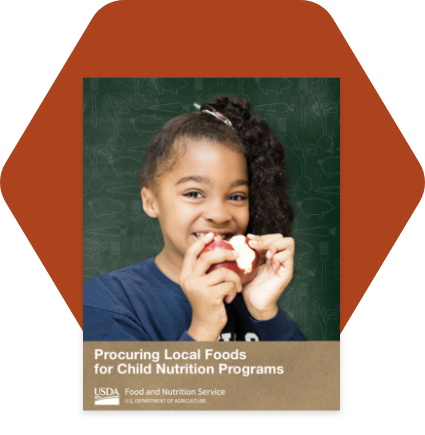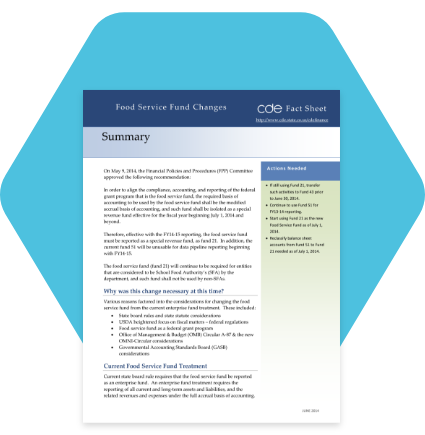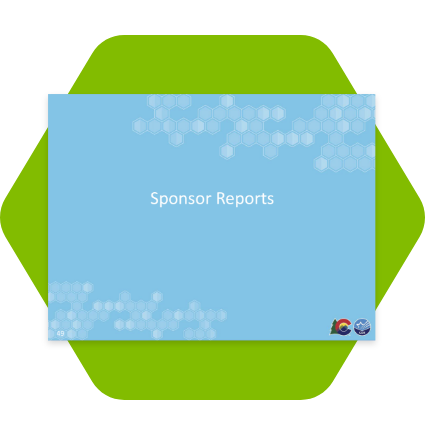Due to inclement weather, CDE will be closed starting at noon on Friday, Nov. 8
The Colorado Talking Book Library and Colorado State Publications Library will also be closed.
You are here
Manage Program Finances

Effective financial management of your child nutrition program provides fiscal stability and allows you to operate an efficient and compliant program. Below you'll find resources to improve school food service operations and guidance for the Resource Management section of the Administrative Review.
Sponsors are responsible for maintaining the financial health of the food service program. This includes ensuring federal compliance with generally accepted accounting principles (GAAP) for federally funded programs and applying the accounting and financial requirements specific to Child Nutrition programs.
Jump To:
Financial Management
In School Year 2022-23, students must be charged for meals when they are not eligible for free or reduced-price meals. Additionally, sponsors must charge accordingly for second meals or milk, adult meals, a la carte items and catering. With the return of charging for student meals, sponsors must implement an unpaid meal charge policy and communicate that policy to households.
Budgeting Tools:

Nonprogram Revenue
School Food Authorities (SFAs) are required to determine if the revenue from nonprogram foods generates at least the same proportion of revenue as they contribute to the SFAs food cost.
Paid Lunch Equity
The Paid Lunch Equity (PLE) Tool was created to assist School Food Authorities calculate their paid lunch price increase requirements and/or non-Federal source contributions to meet the requirements specified in 7 CFR 210.14(e).The PLE tool compares the weighted price for paid lunches to the determined targeted weighted average price. The targeted weighted average price is the difference between the per meal Federal reimbursement for free meals and paid lunches. If a SFA's average weighted price for lunches is less than the targeted weighted average price, the SFA must take action to address the difference.
School Year 2024-25 Paid Lunch Equity Updates:
For School Year 2024-25, only sponsors that had a negative balance in the nonprofit school food service account as of June 30, 2023 must follow paid lunch equity requirements according to 7 CFR 210.14(e) when establishing their paid lunch prices. The targeted lunch price is $3.85 for SY 2024-25. Any sponsor with a positive or zero balance in its nonprofit school food service account as of June 30, 2023 or opting in to Colorado’s Healthy School Meals for All program is exempt from PLE pricing requirements. View the USDA PLE guidance memo for more information.
Financial Reporting
Financial reporting requirements specific to public School Food Authority (SFA) Sponsors:
Special Revenue Fund Resources:
Download Audit and Grant Coding Requirements:


Excess Net Cash
Federal regulation requires state agencies to monitor the level of net cash resources in a sponsor’s food service fund. These regulations specifically require that the level of net cash resources not exceed three months average expenditures as reported in the food service fund. State rules clarify that the three months average expenditures are based upon a nine month operating year. Net cash resources are current assets (not including inventories, nor prepaid items) less current liabilities as of the fiscal year end. Excess net cash is when a sponsor’s cash resources exceed three months average expenditures in the food service fund as defined in federal regulations. Sponsors with excess net cash will be notified and must submit a spending plan to be reviewed and approved by CDE’s School Nutrition Unit. Federal Regulations - 7 CFR 210.19(a)(1) and 7 CFR 210.14(b), State Rule - 1 CCR 301-11-3.03
It is recommended to submit a spending plan or any updates to the plan at the beginning of each school year.
This plan could include improving the quality of meals or the purchase/replacement of food service equipment, but is not limited to these items. The funds must be used for the support of the food service program pursuant to federal and state rules and regulations, including the Colorado Department of Education (CDE) approved equipment list or decision tree process.
Update November 2023: CDE has recently adopted the flexibility of only requiring a spending plan if net cash is in excess of six months average expenditures.
Indirect Costs
The ratio of indirect costs to direct costs, expressed as a percentage. Indirect costs are those elements of cost necessary in the provision of a service which are of such nature that they cannot be readily or accurately identified with the specific service. Direct costs are those elements of cost which can be easily, obviously, and conveniently identified with specific activities or programs.
To understand how your Fixed With Carry Forward Indirect Cost Rate is calculated, you will need to fill out a worksheet using your detailed Indirect Cost Rate Calculations pages (provided below).
Look Up Available Rates
Unpaid Meal Charges
Unpaid Meal Charges contribute to the outstanding amount due to the food service fund for meals already provided to the student. These charges must be reported as accounts receivable in the food service fund. These charges should be tracked as negative balances on the students' accounts in the point of sale (POS).
Learn how to overcome the Unpaid Meal Challenge through proven strategies from our nation's schools.
Read more about debt, refunds and donations.
Questions? Identify Your Point of Contact



Connect With Us




